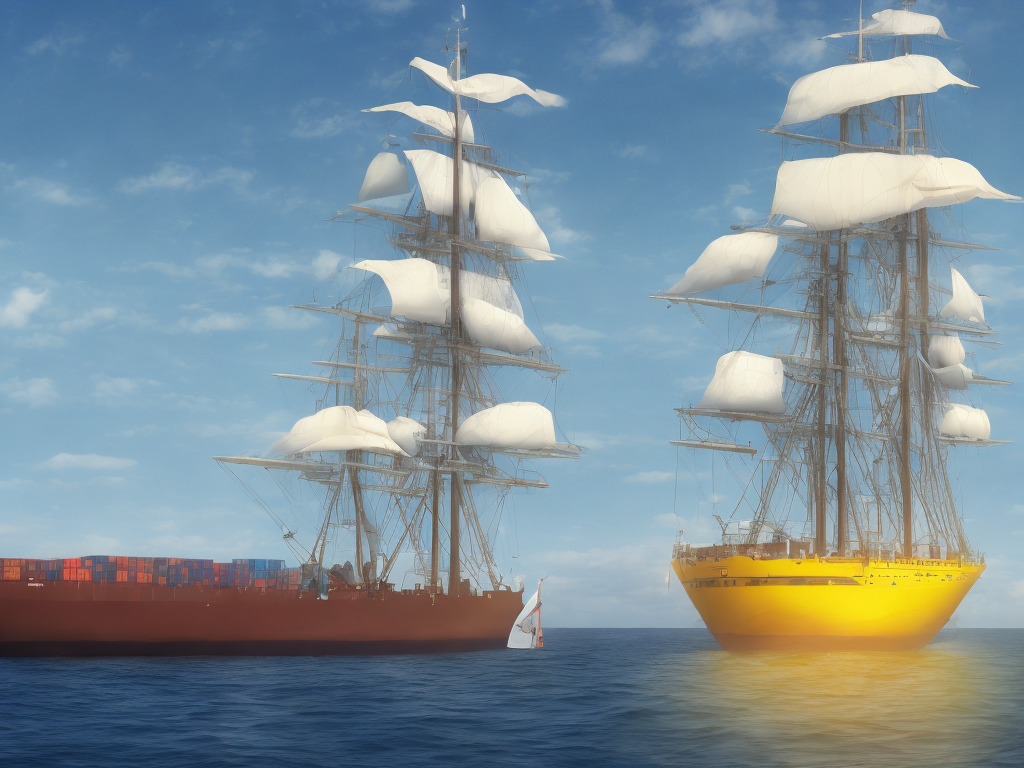
Shipping is an integral part of the global economy, with more than 90% of all goods being transported by sea at some point in their journey. Two types of vessels that are commonly used in the shipping industry are containerships and general cargo vessels. While both vessels are used to transport goods over water, there are several fundamental differences between them.
Definition
A container ship is specifically designed to carry a certain type of cargo, which is standardized as shipping containers. Containers are rectangular in shape and can be stacked up to eight or nine high on the deck of a container ship. Containerships are classified by size and include very large container ships, ultra-large container ships, and even mega container ships.
On the other hand, a general cargo vessel is designed to transport a wide range of goods, including bulk items like ore, grain, or coal, and unpackaged goods like machinery, vehicles, and timber. They do not have the same specifications as container ships, which are created to carry standardized containers.
Capacity
Container ships are typically much larger than general cargo vessels. The biggest container ship in the world, the HMM Algeciras, was launched in 2020 and has a capacity of over 24,000 twenty-foot equivalent units (TEUs). This is the standard size for containers, with most containerships capable of carrying anywhere between 500 TEUs and 12,000 TEUs.
In contrast, general cargo vessels are usually smaller and have a much lower capacity. The biggest general cargo ship in operation, the Vale Brasil, can carry over 400,000 tons, but most general cargo vessels have a capacity between 10,000 and 30,000 tons and are significantly smaller than container ships.
Loading and Unloading Process
The loading and unloading process for container ships is much faster than that of general cargo vessels. This is because containers are standardized and easy to move around, and they can be loaded onto and unloaded from ships using cranes and other equipment. Containers can be stacked on each other allowing for more efficient use of space, and loading and unload time often takes only a few hours.
General cargo vessels, on the other hand, require more time for loading and unloading since the cargo is not standardized. Each item must be loaded and secured separately, which can take hours or even days, depending on the amount of cargo being transported.
Advantages and Disadvantages
One of the main advantages of container ships is that they are more efficient in terms of shipping costs. Since containers are standardized and easy to move around, the loading and unloading process is faster and can be done with fewer people. This means that shipping companies can transport more goods in less time, which reduces both the cost of shipping and the time it takes to deliver goods to their destination.
Another advantage of container ships is that they are more secure. Since each container is sealed, the contents are protected from damage, theft, or tampering. Containers can also be tracked using GPS technology, which makes it easier to know where goods are at all times.
General cargo vessels, however, are more flexible than container ships. They can transport a wide variety of goods, including bulky items such as machinery or vehicles, which would not fit inside standard containers. They are also more adaptable to changes in shipping demand and can be used to transport any type of cargo.
The disadvantage of general cargo vessels is that they are less efficient in terms of cost and time. The loading and unloading process can take much longer, and the cost of transporting goods may be higher due to the need for additional personnel to assist with loading and unloading.
Conclusion
Overall, container ships and general cargo vessels serve different purposes in the shipping industry. Container ships are designed to transport standardized goods and are more efficient and secure, while general cargo vessels are more flexible and can transport a wider variety of cargo. The choice of which vessel to use depends on the type of cargo being transported, the amount of time available, and the cost of shipping. Both vessel types are essential for global trade and play a vital role in connecting the world's economies.
 Self-Instruct
Self-Instruct